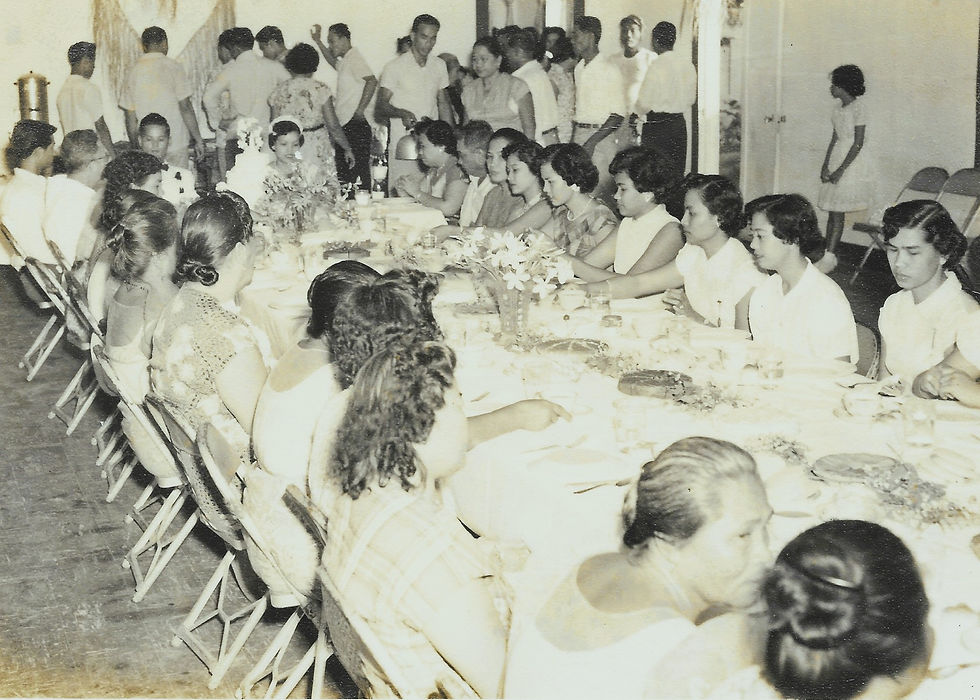Desperate in December
- Diana Mendoza
- Dec 22, 2016
- 3 min read
A friend of mine is spending Christmas alone. “It’s a choice,” he said. He lives and works in one of the most dangerous countries in the world. But on Christmas eve, he probably would be drinking red wine and staring at the beautiful desert moon, wishing his family is having noche buena, or wishing his friends like me from far away are doing just fine, whether or not we are alone or with people we love.
Another friend, a single mom who lives in a cosmopolitan city, will spend “the usual Christmas” with her teen daughter. They will sip hot choco beside the Christmas tree. “By midnight, my daughter and I will stand under the mistletoe to hug and give thanks for the year past.” On New Year, they will stay home and snuggle in front of the TV watching people kiss after the countdown and the ball drop.
I live in a country where it is said that people celebrate the longest Christmas season. That’s true. My neighbor has put up his Christmas lights last November and, as is done in many Filipino households, will take them off on January 6, the feast of the three kings.
I’ve been to a Christmas party that asked us to wear our best fun hats. (Last year, we wore costume masks). I’ve been in two meet-ups and a videoke party. But I’m afraid to get caught in traffic that comes to a standstill by mid-afternoon till early evening. They call it Christmas traffic – this armageddon of people and cars moving in a dense space to shop, meet up, or dine.
Every year, the rush to be in the holiday mood has stressed people of their physical, emotional and financial energies. Beneath the effort to keep up with the cheerful spirit, however, is sadness. Behavioral experts call this depression, desperation or despair.
In countries that experience dark winter months, it is called “seasonal affective disorder” or aptly, SAD, a type of depression. People experience SAD starting in September. There is no clear cause but experts point to the changes in people’s moods with less or no sunlight that triggers depression. In Christian countries that celebrate Christmas in dark winters, getting into the holiday mood all the more becomes a struggle.
I once spent time in London on a spring, but the skies were dark for days I felt uneasy. It wasn’t even winter anymore, but coming from a country with clear blue skies, it was only after I saw the sun peeking from thick clouds at noon did my sadness settle down.
To mental health professionals, the approach of Christmas has meant the increase in loneliness, and they always brace up for suicidal tendencies, because for many people, it would be too much to shop, prepare for upcoming and attend social events and struggle on long checkout lines and in traffic.
There are people who want to end it all because of the overwhelming pressure, a pattern that starts with worrying about presents, new clothes and shoes, food and expenses for social gatherings. The desperation to be happy or to appear happy is a major contributory factor, especially being around people one does not wish to see. The sadness of being alone or missing someone on an important occasion is another.
I know friends who adapt coping mechanisms with the forced joy of Christmas. The ones who spend Christmases alone feel comfortable not being accountable for how they feel, because they say it is not a requirement to feel happy during Christmas. It is also not necessary to have someone to kiss under the mistletoe or on New Year’s eve.
As for me, I have always been fascinated with Christmas lights. I think they’re the only magical things left during this season. I’ve spent many Christmases just blinking with the lights until they go off, wishing that everyone felt happy even just a bit even if they are, just like my two friends, admiring the desert night alone or sipping hot choco beside the Christmas tree.





